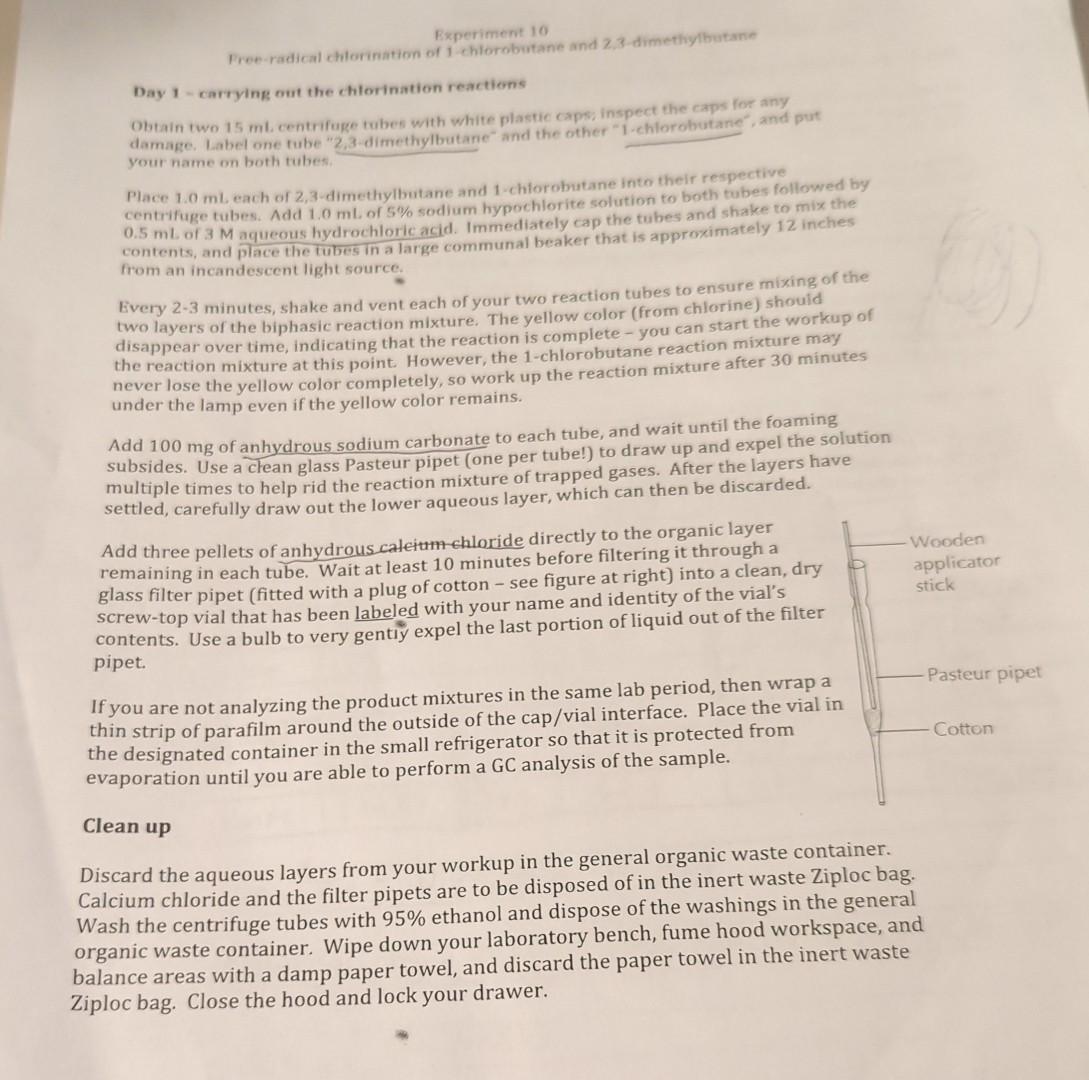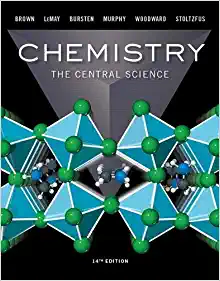Answered step by step
Verified Expert Solution
Question
1 Approved Answer
how do you do prelab calculations and find theoretical yield ? Experimerit 10 Free-radical chlorination of 1 -chlorobitane and 2.3-dimethylbutane Day 1 - carrying out

how do you do prelab calculations and find theoretical yield ?
Experimerit 10 Free-radical chlorination of 1 -chlorobitane and 2.3-dimethylbutane Day 1 - carrying out the chtorination reactions Obtain two 15mL. centrifuge tubes with white plastic caps, inspect the caps for any damage. Label one tube "2,3-dimethylbutane" and the other "1-chlorobutane", and put your name on both tubes. Place 1.0mL each of 2,3-dimethylbutane and 1-chtorobutane into their respective centrifuge tubes. Add 1.0mL of 5% sodium hypochlorite solution to both tubes followed by 0.5mL of 3M aqueous hydrochloric acid. Immediately cap the tubes and shake to mix the contents, and place the tubes in a large communal beaker that is approximately 12 inches from an incandescent light source. Every 2-3 minutes, shake and vent each of your two reaction tubes to ensure mixing of the two layers of the biphasic reaction mixture. The yellow color (from chlorine) shouid disappear over time, indicating that the reaction is complete-you can start the workup of the reaction mixture at this point. However, the 1 -chlorobutane reaction mixture may never lose the yellow color completely, so work up the reaction mixture after 30 minutes under the lamp even if the yellow color remains. Add 100mg of anhydrous sodium carbonate to each tube, and wait until the foaming subsides. Use a clean glass Pasteur pipet (one per tube!) to draw up and expel the solution multiple times to help rid the reaction mixture of trapped gases. After the layers have settled, carefully draw out the lower aqueous layer, which can then be discarded. Add three pellets of anhydrous caleitm chloride directly to the organic layer remaining in each tube. Wait at least 10 minutes before filtering it through a glass filter pipet (fitted with a plug of cotton - see figure at right) into a clean, dry screw-top vial that has been labeled with your name and identity of the vial's contents. Use a bulb to very gentiy expel the last portion of liquid out of the filter pipet. If you are not analyzing the product mixtures in the same lab period, then wrap : thin strip of parafilm around the outside of the cap/vial interface. Place the vial the designated container in the small refrigerator so that it is protected from evaporation until you are able to perform a GC analysis of the sample. Clean up Discard the aqueous layers from your workup in the general organic waste container. Calcium chloride and the filter pipets are to be disposed of in the inert waste Ziploc bag. Wash the centrifuge tubes with 95% ethanol and dispose of the washings in the general organic waste container. Wipe down your laboratory bench, fume hood workspace, and balance areas with a damp paper towel, and discard the paper towel in the inert waste Ziploc bag. Close the hood and lock your drawerStep by Step Solution
There are 3 Steps involved in it
Step: 1

Get Instant Access to Expert-Tailored Solutions
See step-by-step solutions with expert insights and AI powered tools for academic success
Step: 2

Step: 3

Ace Your Homework with AI
Get the answers you need in no time with our AI-driven, step-by-step assistance
Get Started


